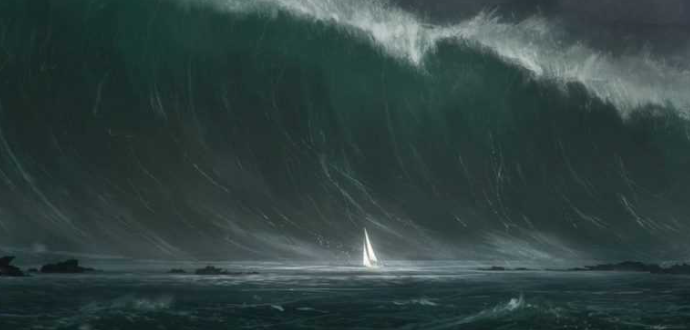The Weekly Reflektion 44/2021
The ‘rogue waves’ described by mariners for many years were thought to be a ‘tall story’ like the ‘fish that got away. Was it just imagination?

Are you conscious of the residual risk in your operations?
On the 12th of December 1978 the MV München cargo vessel was lost with all 28 hands in the North Atlantic during a storm. After an extensive search, a few life jackets, a single container, and four empty life rafts was all that was found. A lifeboat was found two months later, and analysis of the release mechanism found that the steel pins holding the boat in place, 20m above sea level, had been subjected to huge forcesbefore failing. This finding fuelled rumours that the ship had been the victim of a ‘rogue wave’, a scientific impossibility according to the linear wave theory used for wave prediction.
On New Year’s Day 1995, the Draupner platform, a gas hub in the Norwegian sector of the North Sea was hit by a wavemeasuring 25.6 meters from crest to trough. The wave height was recorded by the platform’s extensive instrumentation. This wave was more about 6 meters larger than the statistically interpolated 10,000-year wave. The damage caused by the wave confirmed that the measurement was correct. This was the first confirmed measurement of a rogue wave. The definition of a rogue wave is a surface wave where the height is twice the size of the surrounding waves. They are characterised by a short wavelength, an extremely steep leading face, and appearance with little warning. The waves only last for a few minutes before subsiding.
These rogue waves have been modelled using a non-linear equation from quantum physics, the Schrödinger equation, and seem to be formed from ‘constructive interference’ where waves of different speeds and directions come together and occasionally result in waves of extra height, and troughs of extra depth. These waves also seem to ‘steal’ energy from surrounding waves, becoming unstable and breaking before quickly dissipating. One area which has shown to have many rogue waves is off the South African coast where the warm southerly Agulhas current meets the strong westerly storms from the Southern Ocean, conditions seemingly ideal for rogue waves. Twenty ships in this area were severely damaged by rogue waves between 1990 and 2000.
In 1943, the Queen Mary was transporting 15000 troopsacross the North Atlantic when it was hit broadside by a 28m wave, and immediately listed to 52o, but due to its size managed to re-right itself. Stories from earlier mariners can now be explained.
The design of manned offshore installations in Norway are based on dimensioning wave loads from a 10000-year wave interpolated from actual MetOcean data. The loads are then used in the structural analyses model. Any model that we use to design or operate our facilities are exactly that, models. These will have a degree of uncertainty, some limitations and these must be understood. The degree of uncertainty and the limitations in the models are an inherent part of the residual risk. Do you understand the uncertainties and limitations of the models you use? Do you accept the residual risk consciously or unconsciously?
